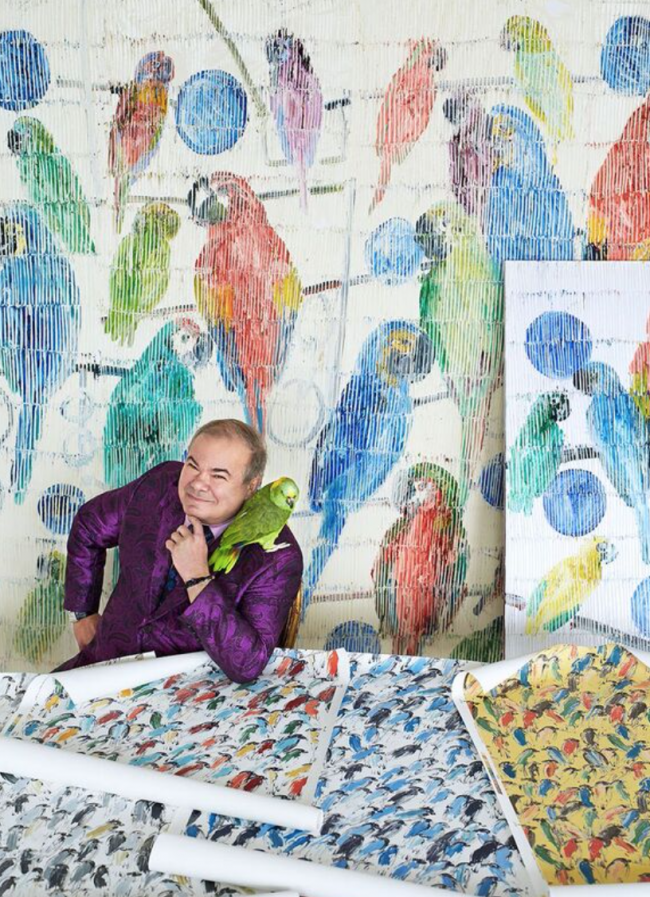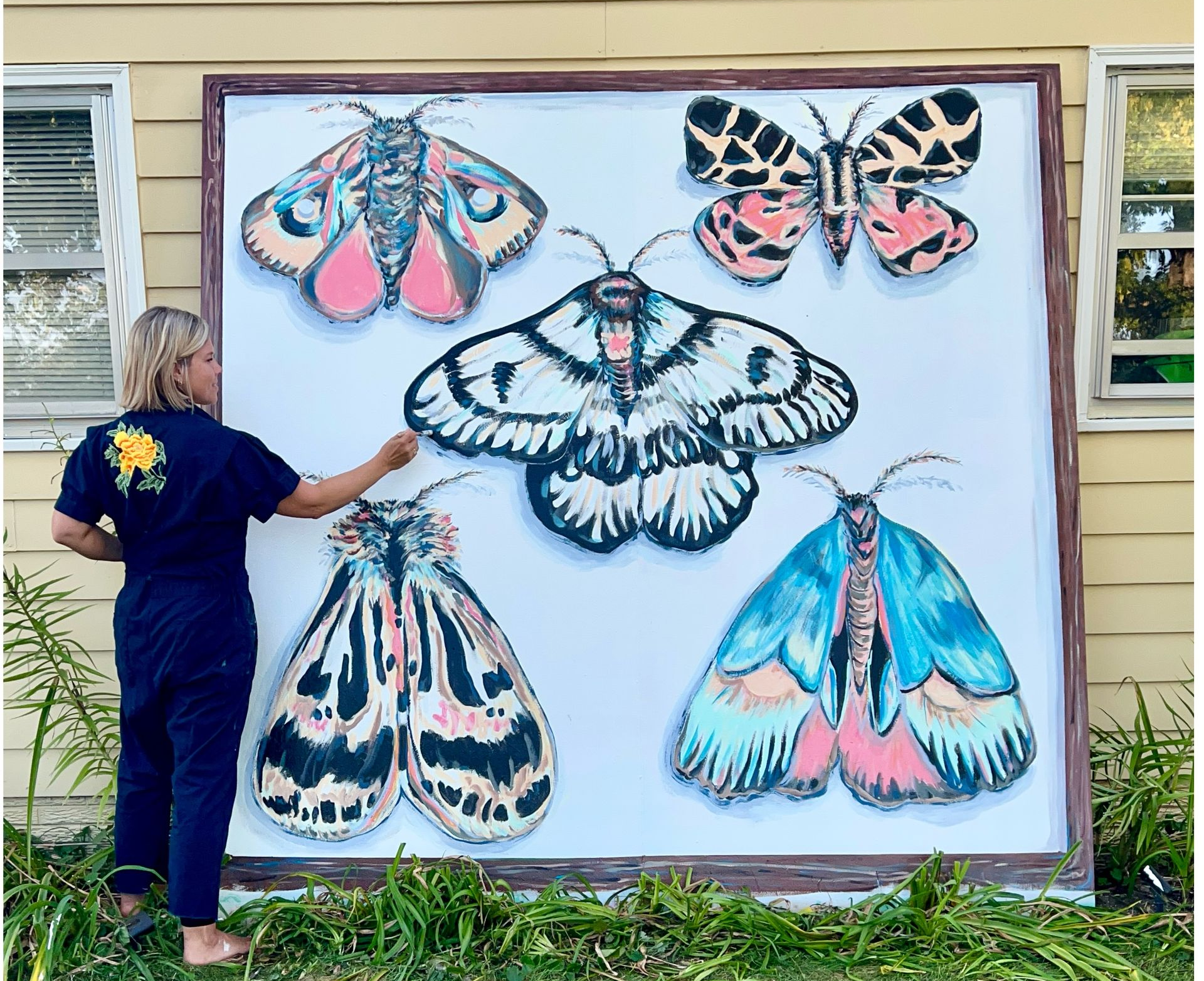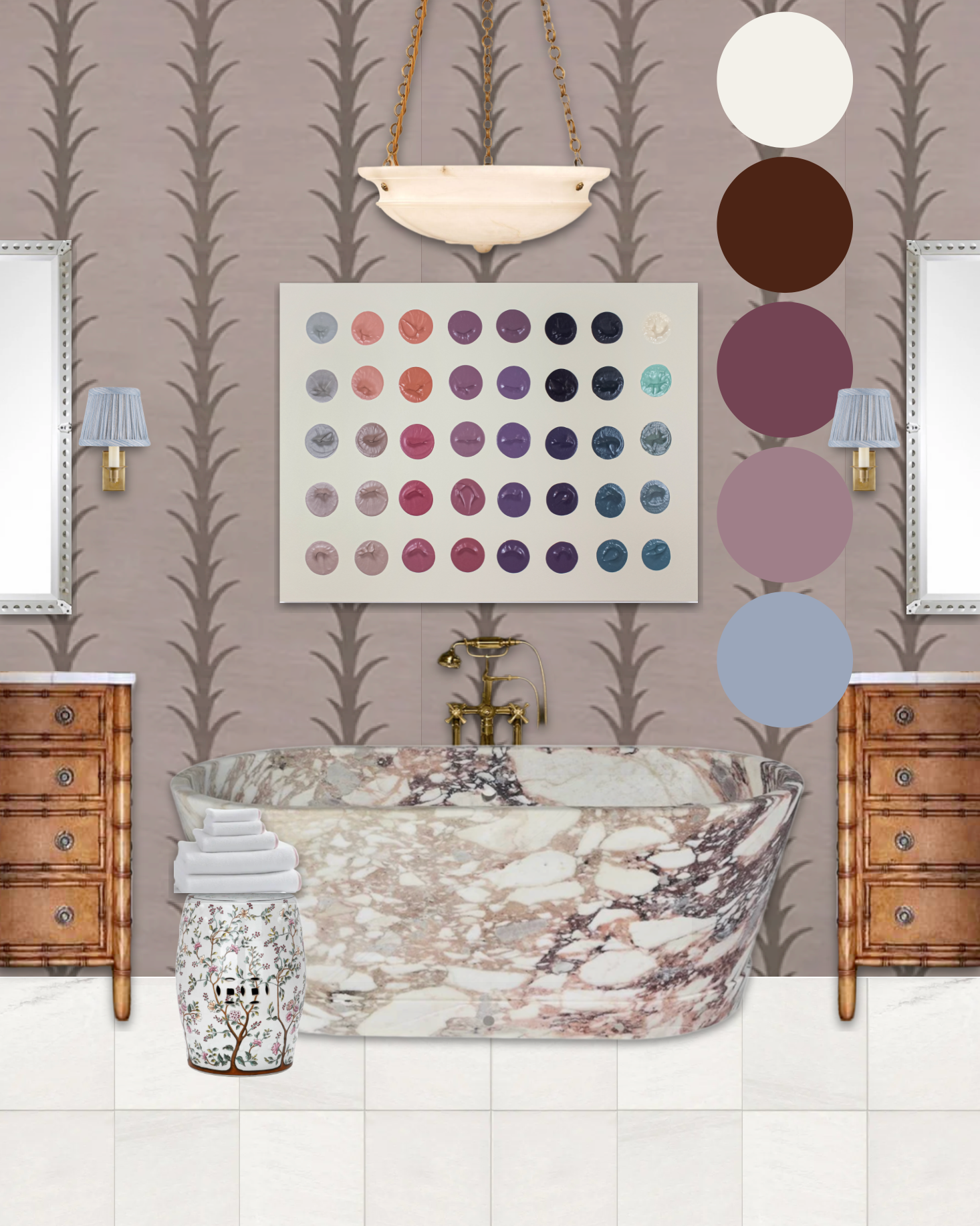Ten Minute Masterpiece: Mona Lisa, Part One
Mona Lisa
Painted from 1503-1516 by Leonardo da Vinci (b. 1452- d. 1519)
The Louvre Museum
, Salle des États, Room 711, Denon Wing, Level 1
Our eyes are on one of the most renowned and visited works of art in history – Leonardo da Vinci’s Mona Lisa.
And since she’s so famous and enchanting, there are just too many details to fit into ten minutes. We’re giving Leonardo da Vinci’s leading lady not one, but two, episodes. Both episodes feature Liz Lidgett Gallery
artist Hunt Slonem.
Ten Minute Masterpieces is hosted by art advisor Liz Lidgett and produced by Maribeth Romslo.
Click this link to see image of: Mona Lisa, Leonardo da Vinci, 1503-1516 The Louvre Museum, Salle des États, Room 711, Denon wing, Level 1
Click this link to see image of: Leonardo da Vinci (1452-1519)
Click this link to see image of: A New York Times headline from August 24, 1911, reported the investigation into the disappearance of the Mona Lisa.
Click this link to see image of: The four bare hooks on the Louvre wall that once held the Mona Lisa. From the Mary Evans Picture Library/The Image Works.
Click this link to see image of: A pictorial representation of the theft shows Vincenzo Peruggia stashing the painting inside his coat.
Click this link to see image of: Mug shots of Vincenzo Perugia, the man accused of taking the Mona Lisa. From Rue des Archives/The Granger Collection.
TRANSCRIPT:
Liz Lidgett 0:01
Welcome to Ten Minute Masterpieces, where we explore curious stories behind the world's most renowned works of art. You may be able to close your eyes and picture the artwork in each of our episodes. But how much do you know about each masterpiece?
Liz Lidgett 0:15
I'm Liz Lidgett. I'm an art advisor and gallery owner in Des Moines, Iowa. And all my life I've been passionate about art. One of the things I love most about what I do is the opportunity to help people connect with a new piece they love or to see a new perspective through art.
Liz Lidgett 0:32
Today, our eyes are on one of the most renowned and visited works of art and history, the Mona Lisa, and since she's so famous and enchanting, there are just too many details to fit into ten minutes. We're giving Leonardo da Vinci's leading lady not one but two episodes.
Liz Lidgett 0:48
Painted in the early 1500s by the Italian Renaissance master Leonardo da Vinci, the Mona Lisa is an oil portrait on a poplar wood panel. The masterpiece features a seated woman with her arms folded, wearing a dark silk dress with gold embroidery, and a thin black veil. She gazes at the viewer and appears to softly smile. Behind the woman a misty landscape rolls into the distance with jagged mountains of foggy lake, a winding river and a rustic bridge.
Liz Lidgett 1:18
The Mona Lisa measures just 30 inches tall by 20 inches high, surprisingly modest in size given her global fame. Leonardo used the painting technique of sfumato, which allows colors to blend gradually into one another, producing softened outlines and hazy forms. The Italian word sfumato means "to evaporate like smoke".
Liz Lidgett 1:38
Most scholars believe the woman depicted in the Mona Lisa is Lisa Gherardini, wife of the Florentine cloth and silk merchant Francesco del Giocondo. The Italian name for the painting is La Gioconda, which means merry or jovial. Similarly, the French called the Mona La Joconde, but most of the world knows the painting as Mona Lisa.
Liz Lidgett 2:00
The foreground of the Mona Lisa is a captivating portrait, and an intricate landscape of the natural world unfolds behind the seated woman. So, I've invited an artist who explores both nature and portraiture and his work to discuss this Ten Minute Masterpiece.
Liz Lidgett 2:15
Hunt Slonem is an internationally acclaimed artist. His paintings hang in museums and galleries around the world. When I was starting my own gallery, I had a short list of artists that were my dream to work with. Hunt was on that list. I got him on the phone and we chatted, he believed in my mission that artwork is for everyone. When he said yes to being represented by the gallery other artists began to say yes to because of how well respected he is in the art world. Hunt is an incredible portraiture artist who is well known for his portraits of Abe Lincoln and Queen Elizabeth. His bunnies and cockatoo paintings have become iconic -- they are reprinted on wallpapers and fabric and in the line for Bergdorf Goodman. Hunt joins us from his New York City studio, where he works with his team as well as a collection of exotic birds, which you may hear from time to time during our conversation.
Bird Noises 3:05
<< birds sqwaking >>
Liz Lidgett 3:05
Hunt, tell us about yourself. Of course, I know you but I want our audience to know you too. So how do you describe yourself as an artist?
Hunt Slonem
3:13
My birds are competing with me. <<laughter>>
Hunt Slonem
3:17
My stuff is mostly entirely based on nature. People say "Why do you paint birds in Manhattan?”. Well, why did Rousseau paint tigers in Paris? I mean, why not, you know? I have to create an urban jungle within the urban jungle. I surround myself with birds and orchids. I've had birds since I was a child. Painting is a very solitary thing at best. And they're very good companions. They're very intelligent. I asked them what they think of things. I've been painting since I was a little kid. That's all I ever wanted to do. So I grew up with wet oil paint surrounding me and my grandfather painted and did something else – he would send me cocoons of great moths, and I would put them in my room and I would come home from school and I'd have a giant Cecropia moth flying around are or a Luna moth. Where he found them I will never know. So that was a big part of my childhood -- my grandfather's influence.
Liz Lidgett 3:17
This podcast is called Ten Minute Masterpieces. And we talked about the most famous works of art in the world. And today's episode is the Mona Lisa. The reason I thought of you was because of the portraiture work that you do. People know your work for the bunnies and your cockatoos and your birds so well. But I have always just truly loved your portraiture work. I think it's astounding. And so I really wanted to get your thoughts on what it's like to be a portraiture artist.
Hunt Slonem
4:53
Well, I started out in the 70s, late 70s, painting saints. Any saint with a New World connection. I love painting people.
Liz Lidgett 5:03
I know so well your Her Majesty pieces with Queen Elizabeth and then also Abe Lincoln. Are you trying to represent them in a certain way to make them look like they do in real life? Or do you want to put your own spin on it?
Hunt Slonemn
5:17
Who knows what they looked like in real life? <<laughter>> We do have photos, right? I mean, Lincoln was photographed as much as Jackie O, probably. Gertrude Stein said, "Oh, but Pablo, it doesn't look like me". And Picasso said "It will, Gertrude."
Liz Lidgett 5:33
<<laughter>> Well, let's talk about the Mona Lisa, then too, because of course, that's what the podcast is about. Pretend you're my art history professor, or that I can't see it myself right now. And would you tell me what it looks like to you? The Mona Lisa, how would you describe it?
Hunt Slonemn
5:51
Well, it's a very thought out portrait of a woman with a mystical background with trails leading to eternity all behind her. Her expression is kind of all knowing, like there's an attainment of some kind of inner strength. Mona Lisa's really just become so incredibly important. And I think it's because it's really a portrait of a woman that has high, high, high spiritual attainment, even though that's not what it's officially about. I mean, I can't think of a single religious painting that has as much of an impact on humanity.
Liz Lidgett 6:34
You are such an interesting person and such a talented artist, and I'm really honored that you took the time to be on the podcast.
Hunt Slonemn
6:41
Oh, my pleasure.
Liz Lidgett 6:42
Thank you so much, and we'll talk soon.
Hunt Slonem
n
6:44
I can't wait.
Liz Lidgett 6:48
Da Vinci was a true Renaissance man. Due to his many interests as an artist, inventor, and writer, he would often take extraordinary amounts of time to complete a painting. Sometimes he would stare at a painting for hours at just one brushstroke and then leave it untouched for a long time. This might be why Leonardo never delivered the painting to the Giocondo family, who commissioned the portrait of Lady Lisa in 1503.
Liz Lidgett 7:10
Da Vinci worked in earnest on the painting until 1506 and continued to refine the Mona Lisa on and off over the following decade. Leonardo brought the unfinished piece with him to France in 1516, where he worked for the French king, Francois the First, until the artist's death in 1519 at the age of 67.
Liz Lidgett 7:30
Leonardo's favorite apprentice and lover, a man named Salai, inherited the Mona Lisa. He sold the painting to the French king. The Mona Lisa then hung in the palace Fontainebleau bathroom for more than 100 years until Louis XIV took the painting to the Palace of Versailles. In 1804, after a short stint hanging in Napoleon's bedroom at the Tuileries Palace, the Mona Lisa made her way to her now-permanent home at the Louvre Museum in Paris.
Liz Lidgett 7:56
As much as the Mona Lisa was a favorite of the French royalty, the painting did not achieve worldwide fame until she was stolen in 1911. In the early hours of an August morning, an Italian handyman who worked at the Louvre lifted the Mona Lisa off the wall. He removed the painting from its frame, wrapped her in a blanket, and in broad daylight hustled to the nearby Quai d'Orsay station. He boarded a morning express train out of the city making a clean get away with the masterpiece.
Liz Lidgett 8:23
It took 26 hours for the museum staff to realize the painting was stolen. During the two years that the Mona Lisa was missing, visitors flocked to the museum to see the empty wall where the painting was hung. The world was fascinated with the heist. Hundreds of people were interviewed as suspects, including J.P. Morgan and Pablo Picasso. The image of da Vinci's masterpiece was printed on the front pages around the world. The New York Times reported "60 Detectives Seek Stolen Mona Lisa -- French Public Indignant!". The flurry of press made the Mona Lisa a household name, and it made the smiling portrait too hot to hock.
Liz Lidgett 9:02
After years of hiding the Mona Lisa under the floorboards of his Paris apartment, the Italian handyman thief, Vincenzo Peruggia, tried to sell the painting to an art dealer in Florence who alerted the authorities. When Peruggia was brought into custody, the thief said he was returning the painting to its rightful home in Italy. The court gave him a lenient sentence given his patriotic reasons, and he served seven months in jail. On New Year's Eve, 1913, the Mona Lisa returned to the Louvre.
Liz Lidgett 9:34
For nearly 500 years, the Mona Lisa, and her mysterious smile had been a source of mystery, intrigue and reverence. Join us for the next episode -- Mona Lisa, Part Two --where we will learn more about when the First Lady of the United States brought the First Lady of the Renaissance to America, and how da Vinci's masterpiece has inspired both acts of honor and of controversy throughout the years.
Liz Lidgett 9:59
Ten Minute Masterpieces is a production of Liz Lidgett Gallery and it's produced by Maribeth Romslo. Special thanks to Hunt Slonem and Allison Dayka . Check out our show notes for credits to this episode and links to more info about the Mona Lisa.
Liz Lidgett 10:13
I hope you'll take ten minutes and look at some art today. You might just discover your favorite masterpiece.
CREDITS
- Creative Morning ( Premium Beat)
- Tour de Louvre, King’s Hall, Silent as Smoke, Maze Heist, National Anthem France, Moments of Clarity ( Epidemic Sound)
RESEARCH AND LINKS OF INTEREST
- The Moving of the Mona Lisa (The Independent, 2005)
- Stealing Mona Lisa (Vanity Fair, May 2009)
- NPR story about the 1911 Mona Lisa theft
- The History and Legacy of Leonardo da Vinci’s Mona Lisa (My Modern Met)
- Louvre Mona Lisa VR Experience
- The Mona Lisa Song by Da Vinci Kids
- Our Spotify playlist inspired by the Mona Lisa






